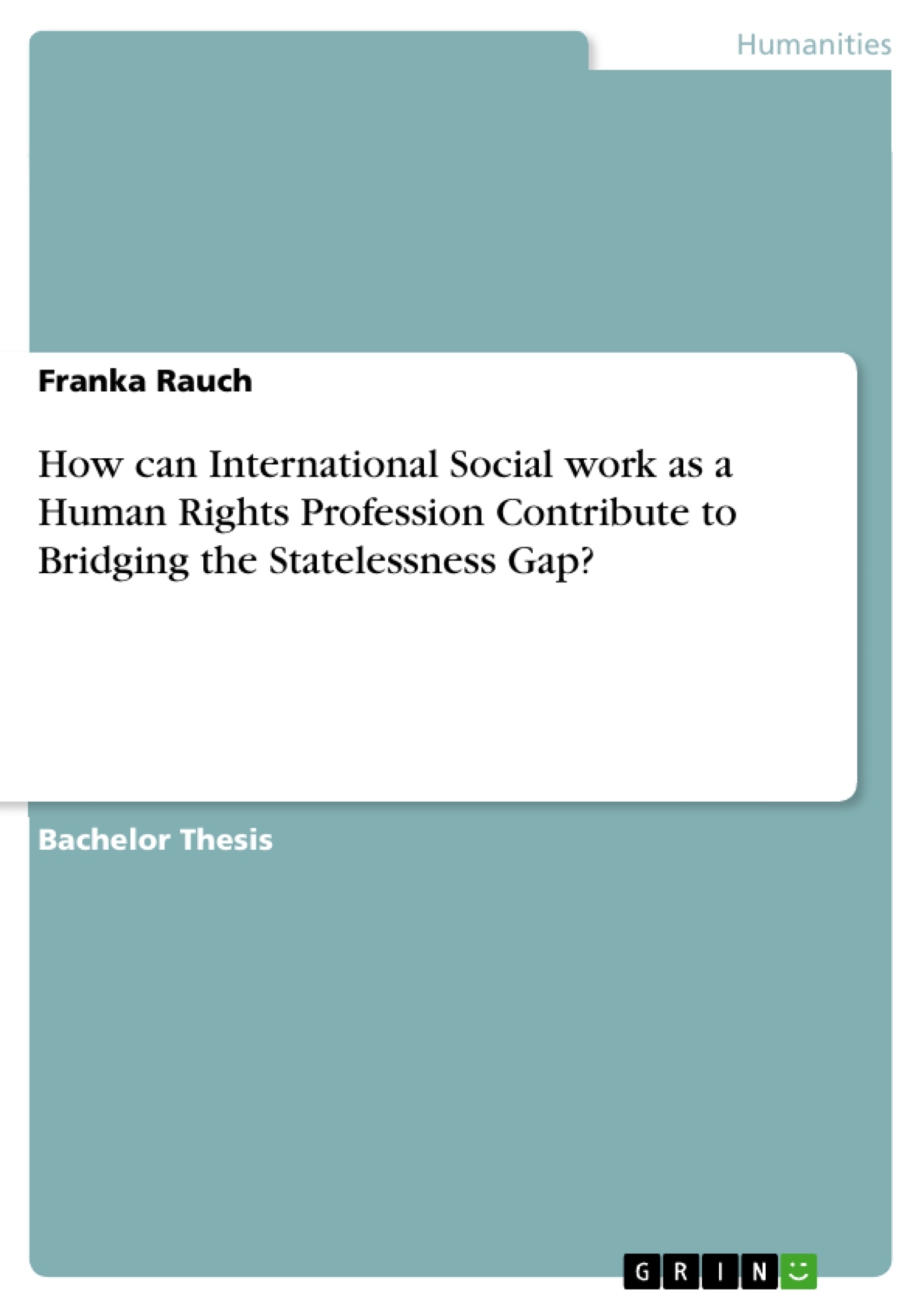With the term statelessness gap, I refer to a phenomenon of exclusion that has multiple dimensions: The statelessness gap describes the phenomenon of millions of people being denied a nationality through gaps in the implementation of human rights norms, but also in the legal system of human rights itself. The statelessness gap also implies that there are gaps in the ways we understand and practice human rights, how we understand belonging and inclusion and how much we are willing to expand our perspectives beyond the legal narratives that describe our world.
The journey of exploring the statelessness gap and relevant social work engagement passes through three chapters: Firstly, I will map the terrain of the statelessness gap, contouring the phenomenon in its magnitude, constitution and severity. Then I will give an overview of the international responses to statelessness within the legal human rights system. For moving from what is to what could be, I will explore why statelessness matters to social work and on which basis social work can take action. Lastly, the human rights mandate in social work will inform three suggestions for social work action towards inclusion and belonging that could help to bridge the statelessness gap.
Contents
Table of figures
Abbreviations and acronyms
1 Introduction: Anything interesting to say?
2 Mapping the statelessness gap
2.1 Statelessness: Contours of a multifaceted phenomenon
2.2 Access denied: (Beyond) human rights violations
2.3 Closing the gap: Approaches to solving statelessness within the UN
2.3.1 The Statelessness Conventions
2.3.2 Relevant UN mechanisms: Human Rights Council and treaty bodies
2.3.3 From “prevention and protection” to ending statelessness until
2.3.4 Reflections on the international responses to statelessness
3 Why statelessness matters to social work: Exploring the human rights mandate
4 Bridging the gap: Social work action towards inclusion and belonging
4.1 Advocacy action within the legal story
4.2 Telling a different story: Practising inclusive citizenship
4.3 Telling a different story: Translating human rights through global citizenship education
5 Conclusion: Towards inclusion and belonging
6 Publication bibliography
- Arbeit zitieren
- Franka Rauch (Autor:in), 2018, How can International Social work as a Human Rights Profession Contribute to Bridging the Statelessness Gap?, München, GRIN Verlag, https://www.grin.com/document/1041103
-

-

-

-
Laden Sie Ihre eigenen Arbeiten hoch! Geld verdienen und iPhone X gewinnen. -

-
Laden Sie Ihre eigenen Arbeiten hoch! Geld verdienen und iPhone X gewinnen. -

-
Laden Sie Ihre eigenen Arbeiten hoch! Geld verdienen und iPhone X gewinnen. -

-
Laden Sie Ihre eigenen Arbeiten hoch! Geld verdienen und iPhone X gewinnen. -

-
Laden Sie Ihre eigenen Arbeiten hoch! Geld verdienen und iPhone X gewinnen. -

-
Laden Sie Ihre eigenen Arbeiten hoch! Geld verdienen und iPhone X gewinnen. -

-
Laden Sie Ihre eigenen Arbeiten hoch! Geld verdienen und iPhone X gewinnen. -

-
Laden Sie Ihre eigenen Arbeiten hoch! Geld verdienen und iPhone X gewinnen. -

-
Laden Sie Ihre eigenen Arbeiten hoch! Geld verdienen und iPhone X gewinnen. -

-
Laden Sie Ihre eigenen Arbeiten hoch! Geld verdienen und iPhone X gewinnen. -

-
Laden Sie Ihre eigenen Arbeiten hoch! Geld verdienen und iPhone X gewinnen.

